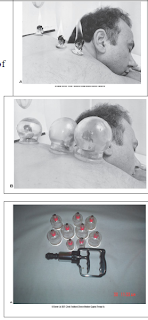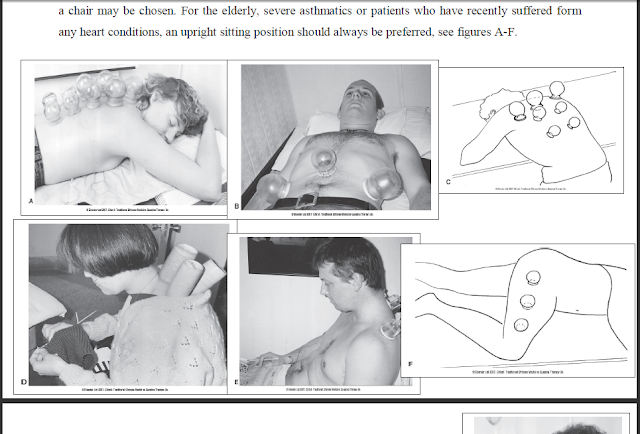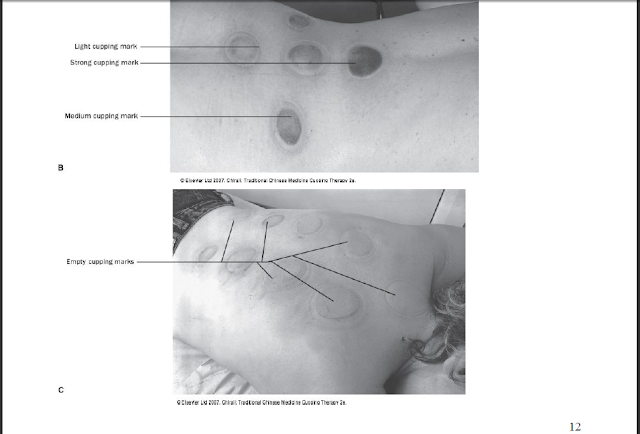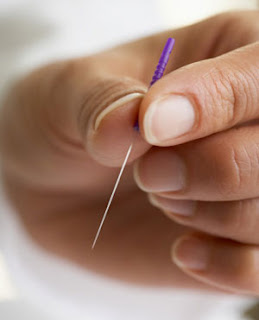The Cupping technique cupping therapy
The Cupping technique cupping therapy
Preliminaries:
- In obese persons and in those suffering from thickened blood (polycytaemia), a hot bath 1 to 2 hours
before cupping is recommended. This helps to stimulate blood flow to the skin, so makes cupping
that much more effective.
- As cupping is performed on the naked skin, the treatment room should be comfortably warm
- Make sure the patient is relaxed and not suffering from any degree of anxiety
- Explain to the patient what you about to do, demonstrate if necessary on your own arm
- In order to achieve better contact between the cup and the skin, liberally apply a suitable massage oil
to the cupping intended area
- The selected areas of skin may be shaved, so that a good seal between the cup and skin can be
achieved.
- Patients about to undergo cupping (especially the wet version) should be advised to take a nutritional
drink before the cupping.
- Pressure applied to cups will vary according to patients. For medium to large frame patients, and in
patients where the cupping sites are endowed with excess fatty tissue, the pressure can be increased.
This ensures that the area beneath the glass will respond at a faster rate than on patients who are
leaner, and with less fatty tissue.
- Cupping can also be carried out in parallel to massage. Choose the best position suitable for the
patient and you as sudden movements are not recommended
The location to be treated is important in deciding the position of the patient. If the cupping is to be
performed on the back, the most comfortable position will be prone on a bed or flat surface area; if on
the stomach, a supine position is preferred. For the face, knees, neck and shoulders, a sitting position in
a chair may be chosen. For the elderly, severe asthmatics or patients who have recently suffered form
any heart conditions, an upright sitting position should always be preferred, see figures A-F.
The process:
The vacuum in the glass or hard plastic suction cup is usually created in one of
two different ways.
In the traditional method, the cup is heated by a flame from an alcohol
soaked cotton pad or taper, then applied immediately to the skin. As the
oxygen burns up, a vacuum is created "sealing" the jar to the skin. The
device can be released easily by hand.
These days, a hand operated vacuum pump is attached to the glass cup, and
suction applied by manual action.
- The appropriate sized cups should be used.
 - Generally, the cups should be placed on flat sections of the skin (which
- Generally, the cups should be placed on flat sections of the skin (which
is usually hair-free, with no bony protuberances, and relatively thick).
- When more than one cup is used simultaneously, the cups should be
separated by 1-2 centimeters.
- If wet cupping is to be carried out, the site selected for cup application
will be incised superficially with a small blade (lancet). A stinging, but not usually painful, sensation
will be experienced.
- The cup is then applied, and the air within will be evacuated with a small hand-held pump. This will
draw 20 to 100mls blood into the cup, depending on the skin thickness of the application zone. After
this, bleeding stops automatically, as haemostatic mechanisms come into operation.
- The process lasts for around 15 to 20 minutes from application of the cup.
- During cupping, the patient must remain as still as possible.
- Precautions need to be taken on when and where the cups are placed, and for how long they are
applied.
Afterwards:
- An antiseptic cream should be applied to the incisions after cupping is terminated. The use of honey
is not only effective as an antiseptic but also assists in the healing of the skin.
- Adequate nutritious liquids should be taken after cupping.
- Solid food intake should be avoided, if possible, for at least 3 hours.
- No shower or bathing should be carried out for 12 hours after cupping.
- Sexual activity should be refrained from for at least one day.
- After cupping, the following signs may be evident:
- Redness of the skin (erythema) which disappears after a few weeks
- Slight itching, as the healing process takes place, at the cupping sites may develop and
persist for a few days. Scratching should be discouraged.
- Light scarring as part of the healing process.
Preliminaries:
- In obese persons and in those suffering from thickened blood (polycytaemia), a hot bath 1 to 2 hours
before cupping is recommended. This helps to stimulate blood flow to the skin, so makes cupping
that much more effective.
- As cupping is performed on the naked skin, the treatment room should be comfortably warm
- Make sure the patient is relaxed and not suffering from any degree of anxiety
- Explain to the patient what you about to do, demonstrate if necessary on your own arm
- In order to achieve better contact between the cup and the skin, liberally apply a suitable massage oil
to the cupping intended area
- The selected areas of skin may be shaved, so that a good seal between the cup and skin can be
achieved.
- Patients about to undergo cupping (especially the wet version) should be advised to take a nutritional
drink before the cupping.
- Pressure applied to cups will vary according to patients. For medium to large frame patients, and in
patients where the cupping sites are endowed with excess fatty tissue, the pressure can be increased.
This ensures that the area beneath the glass will respond at a faster rate than on patients who are
leaner, and with less fatty tissue.
- Cupping can also be carried out in parallel to massage. Choose the best position suitable for the
patient and you as sudden movements are not recommended
The location to be treated is important in deciding the position of the patient. If the cupping is to be
performed on the back, the most comfortable position will be prone on a bed or flat surface area; if on
the stomach, a supine position is preferred. For the face, knees, neck and shoulders, a sitting position in
a chair may be chosen. For the elderly, severe asthmatics or patients who have recently suffered form
any heart conditions, an upright sitting position should always be preferred, see figures A-F.
The process:
The vacuum in the glass or hard plastic suction cup is usually created in one of
two different ways.
In the traditional method, the cup is heated by a flame from an alcohol
soaked cotton pad or taper, then applied immediately to the skin. As the
oxygen burns up, a vacuum is created "sealing" the jar to the skin. The
device can be released easily by hand.
These days, a hand operated vacuum pump is attached to the glass cup, and
suction applied by manual action.
- The appropriate sized cups should be used.
 - Generally, the cups should be placed on flat sections of the skin (which
- Generally, the cups should be placed on flat sections of the skin (whichis usually hair-free, with no bony protuberances, and relatively thick).
- When more than one cup is used simultaneously, the cups should be
separated by 1-2 centimeters.
- If wet cupping is to be carried out, the site selected for cup application
will be incised superficially with a small blade (lancet). A stinging, but not usually painful, sensation
will be experienced.
- The cup is then applied, and the air within will be evacuated with a small hand-held pump. This will
draw 20 to 100mls blood into the cup, depending on the skin thickness of the application zone. After
this, bleeding stops automatically, as haemostatic mechanisms come into operation.
- The process lasts for around 15 to 20 minutes from application of the cup.
- During cupping, the patient must remain as still as possible.
- Precautions need to be taken on when and where the cups are placed, and for how long they are
applied.
Afterwards:
- An antiseptic cream should be applied to the incisions after cupping is terminated. The use of honey
is not only effective as an antiseptic but also assists in the healing of the skin.
- Adequate nutritious liquids should be taken after cupping.
- Solid food intake should be avoided, if possible, for at least 3 hours.
- No shower or bathing should be carried out for 12 hours after cupping.
- Sexual activity should be refrained from for at least one day.
- After cupping, the following signs may be evident:
- Redness of the skin (erythema) which disappears after a few weeks
- Slight itching, as the healing process takes place, at the cupping sites may develop and
persist for a few days. Scratching should be discouraged.
- Light scarring as part of the healing process.




Comments
Post a Comment